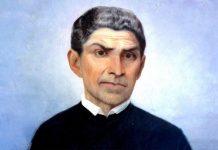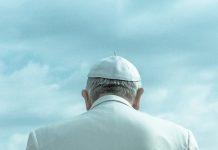The King of England, aided by the Knights Hospitaller, fought with such audacity, dexterity and strength that he defeated the Muslims.
Newsroom (24/08/2023 09:00, Gaudium Press) King Baldwin IV, the heroic leper king, died in 1185. Two years later, Jerusalem was overtaken by the Mohammedans, led by Saladin, who had many Catholics killed and the rest of them reduced to slavery.
This had a tremendous impact on the West, and Pope Clement III sent letters to all of Christendom, in which he “instilled in hearts a zeal for holy vengeance.”
William, Archbishop of Tyre – a city in present-day Lebanon – who had been Baldwin IV’s preceptor and chancellor of the kingdom of Jerusalem, preached in Italy, France and Germany, calling for a new Crusade. He convinced sovereigns, including the King of France, Philip Augustus, and the King of England, Richard the Lionheart, as well as the Emperor of Germany, Frederick the Red-beard, who promoted the Third Crusade.
Some bishops, such as that of Ravenna (Italy), Canterbury (England) and Bethlehem, “bore arms and led the combatants into battle with a warlike ardour that rivalled the captains considered the most illustrious of that time.”
This Crusade “was the best organised of all. The three men who commanded it were true warlords.” Much more important than organisation and military ability are Christian virtues. However, these leaders allowed themselves to be dominated by serious vices that caused the Crusade to fail.
Frederick Redbeard wanted to rule the world
Redbeard was so proud that he wanted to rule the world. After being proclaimed emperor in 1155, he consulted the professors of the University of Bologna, who declared that “the emperor rightfully exercised universal and absolute dominion over every individual, every people and every city.” This was contrary to medieval law.
This was contrary to medieval law, inspired by the Church, according to which “the true sovereign of a kingdom is not the feudal lord, nor the king, nor the emperor, but the Law, whose origin is divine”, that is, the Decalogue, the Law of laws.
Pope Hadrian IV told this haughty man to come and pay his respects, holding the reins of the horse on which he would be riding, as was the legal practice. Redbeard eventually obeyed so as not to lose his prestige with the Catholics.
Although he had been excommunicated a few times for supporting anti-popes, in 1189 the emperor Redbeard decided to set off for the East commanding an army of 100,000 men, but he drowned in a small river in Turkey and his army was practically destroyed.
Reconquest of St. John of Acre
In July 1191, Philip Augustus and Richard laid siege to St. John of Acre, which was held by the Mohammedans. This city – now called Acre – was located on the shores of the Mediterranean Sea, close to the famous Mount Carmel, where the Prophet Elijah had brought down fire from heaven and “put to the sword [450] prophets of Baal” (I Kings 19:1).
The besiegers erected crosses on top of the walls and bashed the crosses with sticks, covered them with filth and broke them into a thousand pieces in full view of the besiegers. And in the crusaders’ tents, where there were chapels, Masses were celebrated in reparation for these abominations.
After almost two years of intense fighting – and shameful squabbles between the Crusader leaders over matters of command – the city was reconquered. 120,000 Catholics died, including six archbishops and twelve bishops.
Soon afterwards, Philip Augustus returned to France to take care of his business… And Jerusalem was still oppressed by the Muslims.
Richard, on his way to a city on the Mediterranean coast, was attacked by Saladin at Ausouf – now Apollonia, in Israel. The King of England, aided by the Knights Hospitallers, fought with such audacity, dexterity and strength that he defeated the Muslims: 8,000 soldiers and 32 Mohammedan emirs died, while among the Catholics there were 1,000 casualties. After this victory, he became known as “Richard the Lionheart”.
Twenty kilometres from Jerusalem, he turned around…
In several other battles, Richard the Lionheart showed prodigious courage in the face of his enemies. One emir even declared that his deeds were “above human nature.” It could be said that Angels were directing him to reconquer the Holy Sepulchre, which had been desecrated by the enemies of the Church. However, he didn’t want to be led by angelic spirits…
On Christmas Day 1191, Richard and his army set off for Jerusalem. But being only 20 kilometres from the Holy City, he turned around, took his warriors to the shores of the Mediterranean and began to negotiate with Saladin. A year later, he concluded a peace treaty with the pagan leader.
“After so many prodigious blows [against the Mohammedans], he had replaced the Holy War with the Franco-Islamic rapprochement.”
Punishments he suffered in Europe
Returning to Europe in 1192, Richard was severely chastised. On arriving in a town near Vienna, although dressed as a pilgrim, he was recognised and the Duke of Austria, Leopold V sent him to the Emperor of Germany, Henry VI, known as “The Cruel”, who was the son of Frederick the Red-beard, and who threw him into a prison where those condemned to death were held.
After almost two years in captivity, he managed to pay a huge ransom – even sacred objects and vessels from churches were sold for this purpose – and returned to England, but had to fight his brother John the Landless, who had tried to seize the throne.
In May 1194, he landed in Normandy – northern France – where he waged war against Philip Augustus and died in battle in 1199 at the age of 41.
And what happened to the King of France, Philip Augustus, who left the Holy Land immediately after the conquest of St. John of Acre? He went to Rome to ask the Pope for permission to abandon the Crusade, which he had vowed to carry out. He then returned to France where he faced terrible difficulties, including marriage problems, and was excommunicated by Pope Innocent III in 1200.
He also took part in several wars and died in 1223, aged 57.
By Paulo Francisco Martos,
With files from ‘Notions of Church History’
Compiled by Sandra Chisholm






























